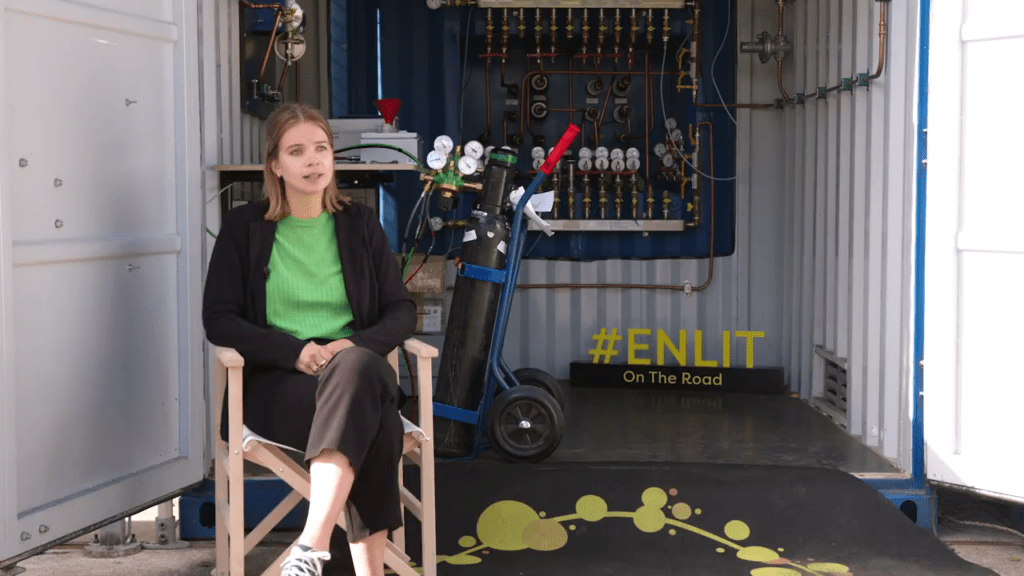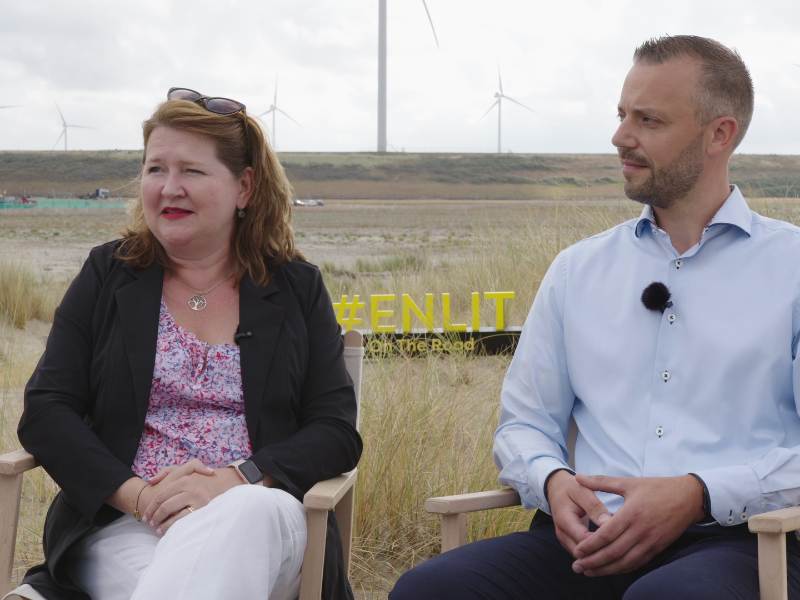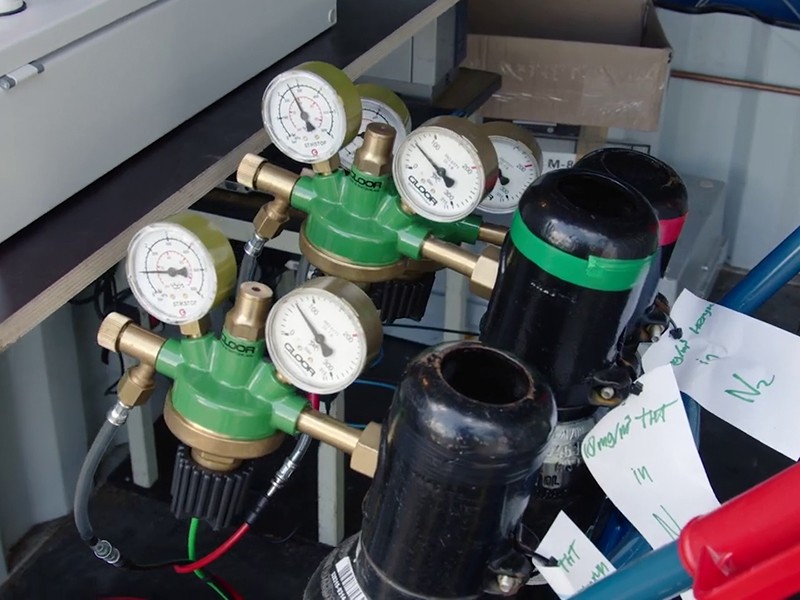Rotterdam, headquarters of Dutch distribution system operator Stedin and home to Europe’s largest seaport, is laying the foundations for a decarbonised future with its development of hydrogen, writes Jonathan Spencer Jones.
Stedin started experimenting with the production of green hydrogen and its blending with natural gas as far back as 2007 in a project on the Dutch north coast island of Ameland.
With the results from this and the intent to overcome the hydrogen blending limit – generally regarded around 20% – Stedin then set up a larger trial closer to home in the Rotterdam municipality town of Rozenburg.
Almost a decade on and following a 2018 expansion from the first phase with synthetic methane production, this trial is still running with at least a further year to go, and contributing important knowledge on how DSOs can use the existing gas network to distribute sustainable gases such as green hydrogen safely and reliably.
“Our goal was to show that hydrogen actually works and while one can do a lot on paper, we wanted to put it into practice,” says Tessa Hillen, Energy Transition Analyst at Stedin.
Sulphur free hydrogen
Power-to-gas Rozenburg comprises an electrolyser powered by rooftop solar PV that produces the green hydrogen that is then delivered via a natural gas pipeline for heating in a nearby apartment complex.
Hillen explains that only some adjustments were needed to the pipeline to make it suitable for hydrogen, opening the way for scaling up the approach, anticipated in 2025, to a hydrogen village.
However, she adds that a key step before larger scale conversion – which has become an important focus of the trial in partnership with the French gas DSO GRDF – is odourising hydrogen. Like natural gas, hydrogen is odourless but the current odourant contains sulphur, which is damaging to hydrogen fuel cells.
MORE | Enlit on the Road Rotterdam
“For fuel cells connected to the gas grid, we need sulphur-free hydrogen,” says Hillen.
She also notes that a related aspect under investigation is that of the sulphur residues in existing gas pipelines and how these can be removed.
In partnership with DNV, three odourants were identified: namely, 5-ethylidene-2- norbornene, methyl tertbutyl ether and 2-hexyne, of which the latter appears the most suitable. While its odour is reported as difficult to describe, it was identified by a majority of Stedin employees to whom it was presented as “most distinctive, alarming and similar to [natural gas odourant]”.

Large-scale production
While Stedin continues experiments, individually and in partnership with other DSOs, on hydrogen distribution technologies for residential use (among others), the large-scale production and market input of hydrogen is coming under the spotlight at the Port of Rotterdam.
The port, long known for its innovative approach to new technologies, early on took the decision to become an international hub for hydrogen with a large-scale network across the port complex encompassing imports, production, application and transport to other locations in northwest Europe.
MoUs have been signed with parties across the world, from Chile and Colombia in Latin America to South Africa and Australia, with the import potential estimated from these and other countries at 4Mt of hydrogen annually by 2030 and up to 20Mt by 2050.
“Our goal was to show that hydrogen actually works and while one can do a lot on paper, we wanted to put it into practice.”
Tessa Hillen, Stedin
Among operators within the port area, the offshore wind foundation provider Sif is leading a project which envisages the installation of a small-scale hydrogen production unit powered by a wind turbine at the company’s Maasvlakte 2 terminal. Longer term the aim would be to scale up the concept for off-grid hydrogen production offshore with offshore wind.

Energy Conversion Park
But arguably the most significant development at the port is the Conversion Park on Maasvlakte 2, on which at least 1GW of hydrogen electrolyser capacity is planned.
And the first company to commit there, Shell, has started developing what is Europe’s largest electrolyser of 200MW.
With an output of up to 60,000kg of green hydrogen per day, the electrolyser will be powered from the Shell-Eneco 759MW Hollandse Kust (Noord) offshore wind farm, which is also under construction, and is expected to become operational in 2025.
Notably, the wind farm – which is due to be operational by the end of 2023 – will include a supplementary floating solar array to improve the reliability of the output, particularly in the summer when the wind strengths tend to be lower.
MORE | Hydrogen
The hydrogen will be supplied to Shell’s nearby Energy and Chemicals Park in Pernis, where it will replace some of the grey hydrogen usage and partially decarbonise the production of fuels and other products as well as being directed for heavy transport use.
“With this programme we are focussed on renewable power and electrification in the port and we want to help the companies to decarbonise by ensuring all the elements are there,” says Randolf Weterings, Electrification and Hydrogen Manager.
Actions include developing access to sufficient renewable power to produce the green hydrogen and providing an open access pipeline infrastructure for local producers and users with connections to national and international networks to support the development of the hydrogen market.
“The unique thing about Rotterdam is that all the elements of the energy transition are very close by in the port area. We can access renewable power from offshore wind, we have the terminals that connect Europe to countries across the globe and we have the large-scale industry that can use the hydrogen,” says Weterings.
“The unique thing about Rotterdam is that all the elements of the energy transition are very close by in the port area.”
Randolf Weterings, Port of Rotterdam
Lijs Groenendaal, Shell’s Hydrogen Business and Project Development Manager, explains that the new electrolyser, Holland Hydrogen 1, is a significant step-up from the current megawatt scale electrolysers.
“We need to learn how to build and operate it and produce hydrogen safely and this will be a huge challenge,” she says.
“There needs to be a regulatory framework and there’s going to be a whole ecosystem of hydrogen developments and so all of the 150 parties involved will need to collaborate to make it happen.”
She also describes the project, as the first, as “an enabler”, both with its scale as well as with its lead in the development of the port’s offshore power connection and the first to commit to using the HyTransPort open access pipeline. This should enable other developers not only within the port but also more widely in Europe to “fast follow”.
Sustainable development
Groenendaal says that a key focus of the development is on sustainability, starting from the design with a visually appealing look in tune in the port area. the surrounding natural area.
“The architects have worked hard and put in research and innovation so that all the resources – energy, water, air, biodioversity, materials – will have to be clean or cleaner when leaving the building than when entering it.”
For example both air and water will be purified on a scale previously untested.
“Rotterdam is where it all comes together,” concludes Groenendaal. “We believe in the energy transition and we think green hydrogen is going to play a large role in decarbonising our fuel products and mobility. In Rotterdam we’ve got the demand and supply – the customers and production – in one place, so it’s a unique spot to build all the infrastructure.”










